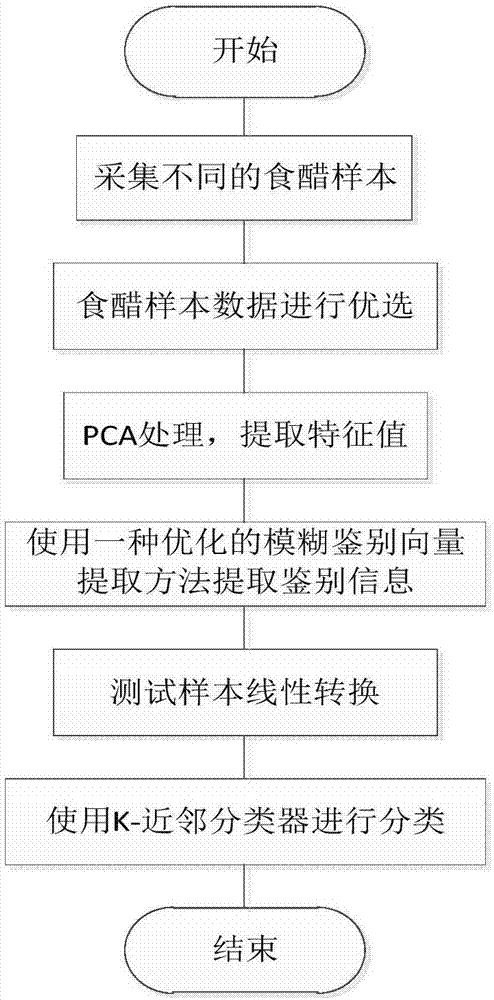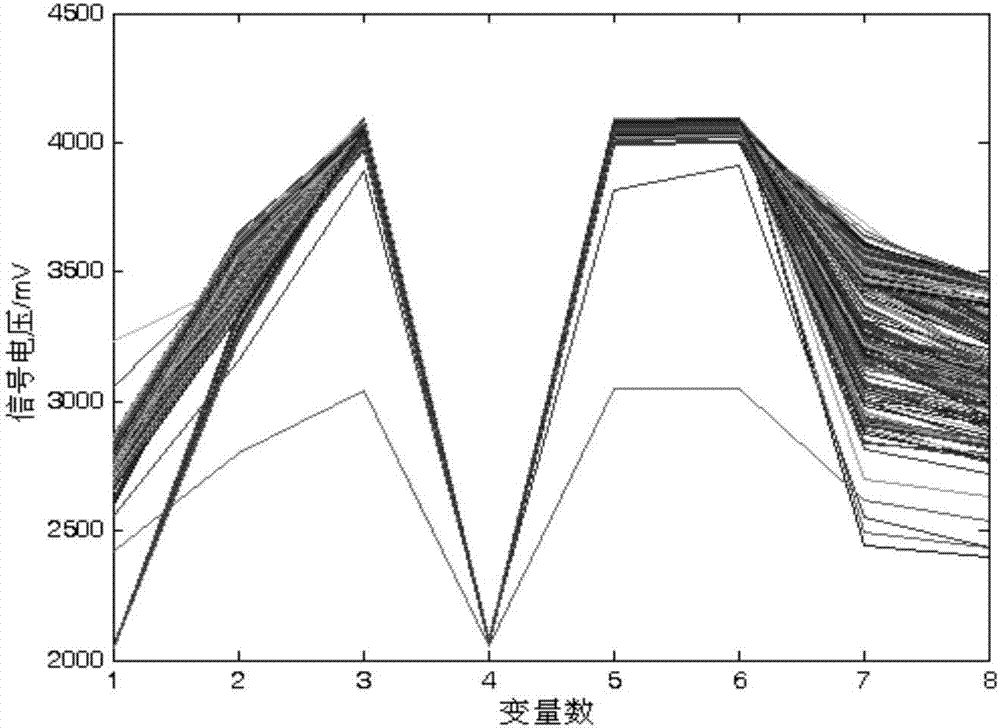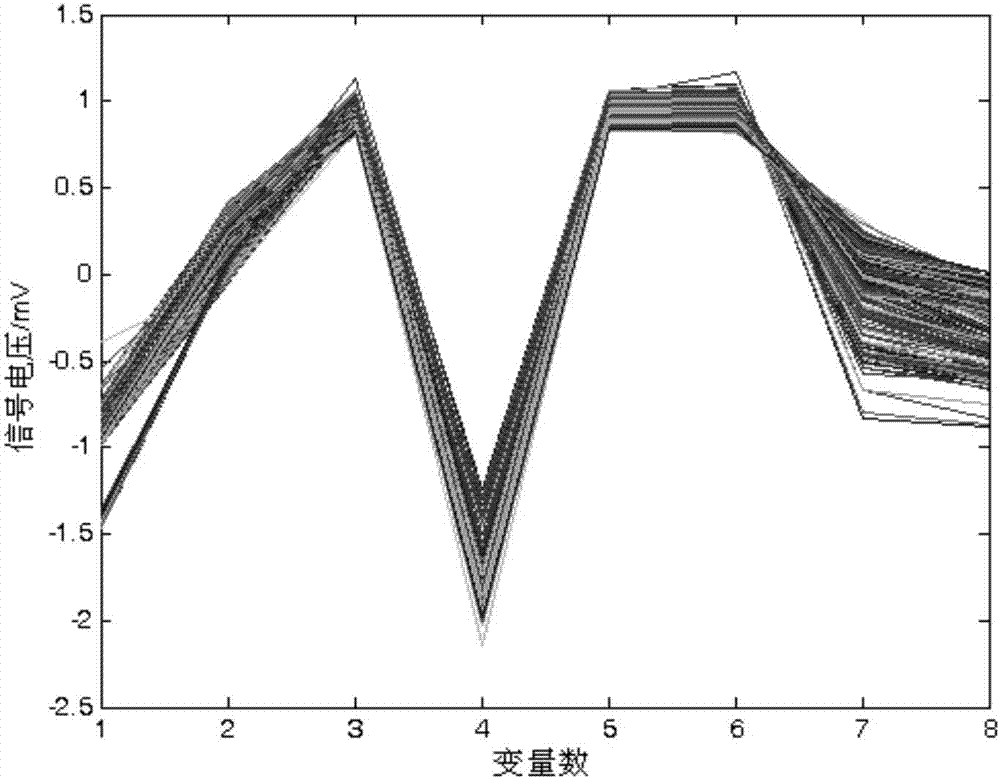Method using electronic nose to identify vinegar varieties by extracting optimization fuzzy identification vector
An optimal identification vector, electronic nose technology, applied in character and pattern recognition, instruments, computer parts and other directions, can solve the problems of high cost and pattern recognition algorithm affecting the classification accuracy, so as to improve the classification accuracy and improve the classification accuracy. The effect of accuracy and easy classification
- Summary
- Abstract
- Description
- Claims
- Application Information
AI Technical Summary
Problems solved by technology
Method used
Image
Examples
Embodiment
[0050] Step 1. Use the electronic nose to collect samples of different varieties of vinegar:
[0051] The electronic nose was energized, and the five types of vinegar were collected 51 times, a total of 255 times were collected, and 255 samples were obtained, and the experimental data collection results were saved. The total sample is a 255×10 data matrix, and the total sample is divided into training samples and test samples: the first 25 of the 51 samples of each type of vinegar are used as training samples, and the last 26 are used as test samples. The number of training samples is 125, each sample is a vector of 1×10, and a data matrix of 125×10 is obtained; the number of test samples is 130, and each sample is a vector of 1×10, and a data matrix of 130×10 is obtained.
[0052] Step 2. Optimizing the vinegar sample data:
[0053] 1. Randomly select b sensors from a sensor without sorting. situation. In this example, a takes 10, and b takes 8. There are 45 situations in...
PUM
 Login to View More
Login to View More Abstract
Description
Claims
Application Information
 Login to View More
Login to View More - R&D
- Intellectual Property
- Life Sciences
- Materials
- Tech Scout
- Unparalleled Data Quality
- Higher Quality Content
- 60% Fewer Hallucinations
Browse by: Latest US Patents, China's latest patents, Technical Efficacy Thesaurus, Application Domain, Technology Topic, Popular Technical Reports.
© 2025 PatSnap. All rights reserved.Legal|Privacy policy|Modern Slavery Act Transparency Statement|Sitemap|About US| Contact US: help@patsnap.com



